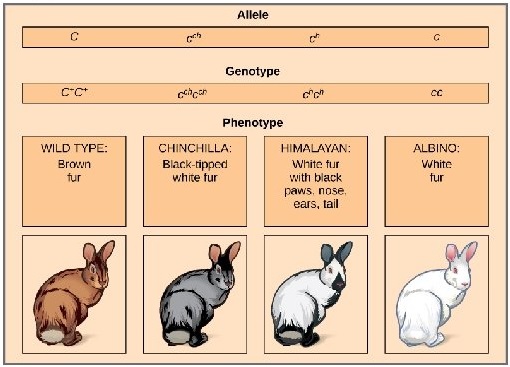Learninsta presents the core concepts of Biology with high-quality research papers and topical review articles.
Principles of Inheritance and Variation Multiple Alleles
The genetic segregations in Mendelian inheritance reveal that all genes have two alternative forms – dominant and recessive alleles e.g. tall versus dwarf (T and t). The former is the normal allele or wild allele and the latter the mutant allele.
A gene can mutate several times producing several alternative forms. When three or more alleles of a gene that control a particular trait occupy the same locus on the homologous chromosome of an organism, they are called multiple alleles and their inheritance is called multiple allelism.
Multiple alleles exist in a population when there are many variations of a gene present. In organisms with two copies of every gene, also known as diploid organisms, each organism has the ability to express two alleles at the same time. They can be the same allele, which is called a homozygous genotype.
Multiple alleles refer to the occurrence of three or more than three alleles for a particular gene. Alleles are different or contrasting forms of a gene. For example, for the gene encoding for height, one allele can be for tallness, whereas the other can be for dwarfness.
Mendel implied that only two alleles, one dominant and one recessive, could exist for a given gene. The variant may be recessive or dominant to the wild-type allele. An example of multiple alleles is the ABO blood-type system in humans.
Polygenic Inheritance: Human skin color is a good example of polygenic (multiple gene) inheritance. A genotype with all “dominant” capital genes (AABBCC) has the maximum amount of melanin and very dark skin. A genotype with all “recessive” small case genes (aabbcc) has the lowest amount of melanin and very light skin.
Multiple alleles exist in a population when there are many variations of a gene present. In both haploid and diploid organisms, new alleles are created by spontaneous mutations. These mutations can arise in a variety of ways, but the effect is a different sequence of nucleic acid bases in the DNA.
Multiple alleles are present at the same locus of the chromosomes. A classical example of multiple alleles is found in ABO blood group system of humans. Despite the multiple alleles of any gene, an individual possess and can have only two alleles at a time.
